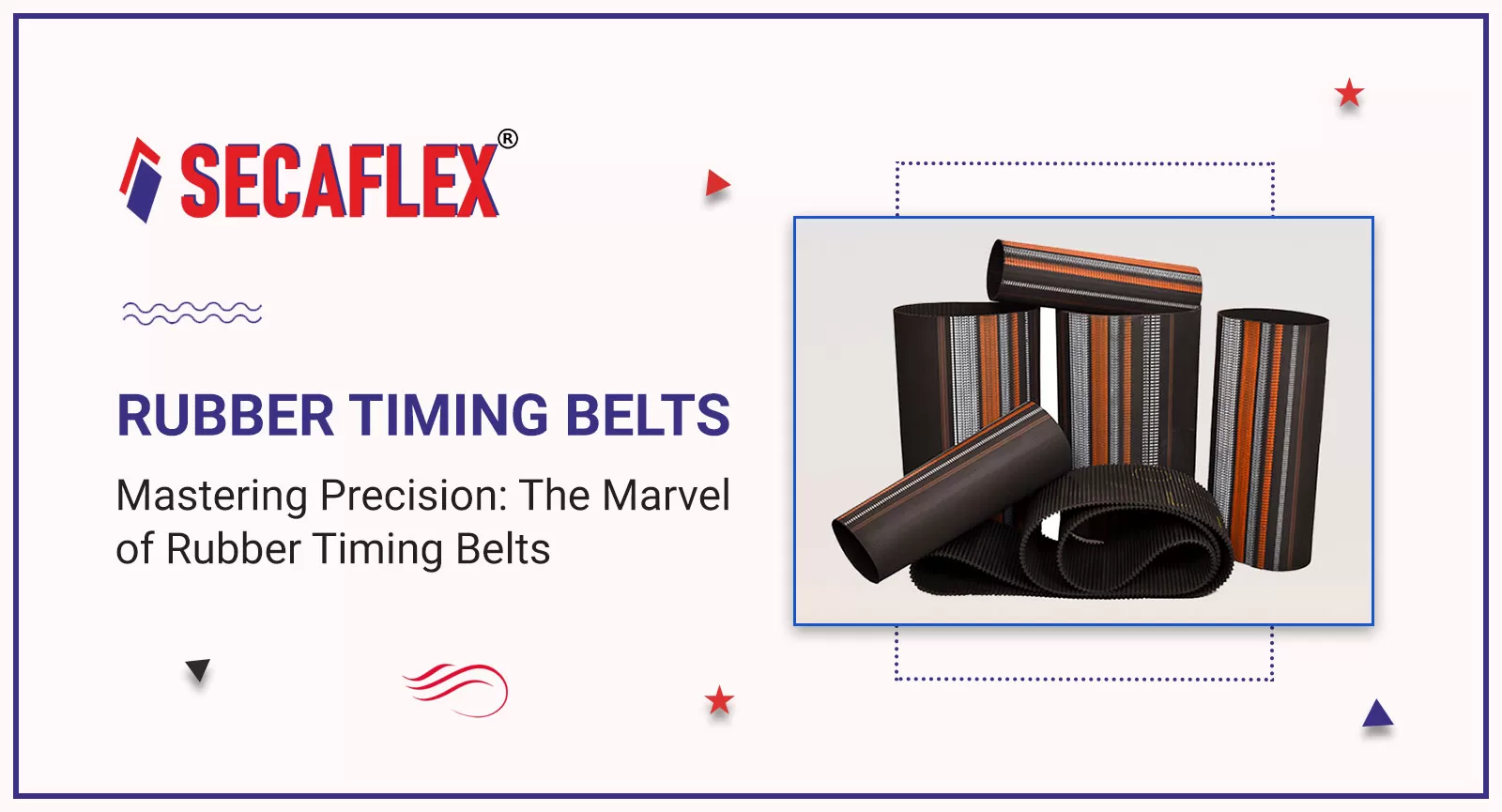- + 91-9167662789
- care@dktee.com
Mastering Precision: The Marvel of Rubber Timing Belts

September 14, 2023
Precision and timing are of the utmost importance in the complex machinery that propels the contemporary world. The Rubber Timing Belt is an integral part of many machines, production lines, and automobiles. This simple yet critical technical wonder by Rubber Timing Belt Manufacturers in India coordinates the actions of several different components to ensure smooth functioning.
The Transition from Leather to Rubber Timing Belts
- Leather belts were used in the first versions.
Timing belts were first used in factories during the Industrial Revolution. A primitive awareness of the necessity of timing mechanical motions was evident in the early versions’ leather construction. Although they served their purpose, these belts eventually wore down because of exposure to the elements and temperature changes.
- The Revolutionary New Rubber Technology
The development of rubber technology was a watershed moment in the history of timing belts. Vulcanized rubber’s improved endurance, performance, and resilience to the elements has had a huge impact on the industry of PU Timing Belts.
The Components of a Rubber Timing Belt
- Reinforced Rubber for the Belt’s Core
High-strength, reinforced rubber is used as the foundation of a Rubber Timing Belt. This base provides the belt with the structural stability it needs to endure the stresses of high-torque uses.
- Engineering Perfection
A toothed profile is characteristic of a rubber timing belt. These closely spaced teeth mesh with complementary gears or pulleys to keep everything in a system perfectly in time with one another.
- Reinforcement of Tension Members using Fiberglass or Kevlar
Tension components, often comprised of fiberglass or Kevlar, are embedded in the rubber matrix. These reinforcements increase robustness, so they don’t stretch or distort even when subjected to extreme pressure.
- Rubber Timing Belts and the Operation of Synchronization
Rubber Timing Belts are mechanical conductors, coordinating the motion of several parts so that the whole system runs smoothly. The belt’s teeth lock into place when it rotates on pulleys or gears, guaranteeing accurate timing and preventing the belt from slipping. Engines, production machinery, and many other types of industrial machinery depend on this intricate dance of precision.
Producing Custom Timing Belts
- A Wide Range of Profiles, Including HTD, GT2, and More
Various tasks need distinct tooth profiles. Popular options include High Torque Drive (HTD) and GT2, both of which are optimized for specific uses, such as high-torque automobile engines or precision-driven manufacturing equipment, respectively.
- Modification for Use in Unique Situations
Specialized industries and unique pieces of equipment sometimes need one-of-a-kind timing belts. From the food industry to the aerospace industry, each of these settings requires a specialized strategy to provide the best possible results.
- Chemical and Temperature Resistance
Modern rubber compositions are designed to keep their shape at high heat and to survive chemical breakdown. This is essential for uses in places where exposure to rough conditions is unavoidable.
Preserving Rubber Timing Belts through Regular Maintenance
A Rubber Timing Belt has to be installed correctly, inspected often, and replaced when necessary to ensure its life and efficiency. Important measures are as follows:
- Varying the Pressure
Keeping the right tension is critical. The tension should be checked and adjusted on a regular basis to meet the standards set by the manufacturer.
- Checking for signs of damage and wear
Be sure to check for obvious damage to the belt’s teeth or fraying on a regular basis. A catastrophic breakdown may be avoided if a worn belt is replaced in a timely manner.
- Ecology Must Be Taken Into Account
Choose belts built specifically for use in extreme situations, such as those with high temperatures or chemical exposure.
Conclusion
Despite being overshadowed by flashier parts, the rubber timing belt is a monument to the sophistication and accuracy of contemporary engineering. From its origins in leather to its modern iteration as reinforced rubber, this seemingly little part serves a crucial role in the efficient functioning of innumerable equipment and systems. The synchronized pulse that propels the industrial world ahead may be better appreciated if its anatomy, function, and maintenance needs are known and addressed.
In terms of exporting Rubber Timing Belts from India, DKT Engineering Enterprises is the best option if you need high-quality Timing Belts. They are best Rubber Timing Belt Suppliers in India that provides rubber timing belts in a range of sizes and designs to meet the needs of our customers.
About Author
DKT Engineering Enterprises
DKT Engineering Enterprises has vast experience in manufacturing conveyor belts in India. We are providing high quality products to our clients Since 2010.

